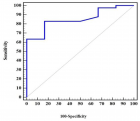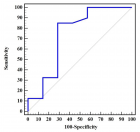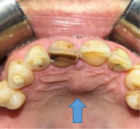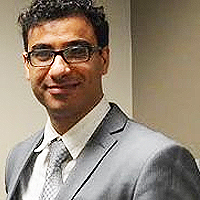Abstract
Research Article
Value of Speckle Tracking Echocardiography in Prediction of Left Ventricular Reverse Remodeling in Patients with Chronic total Occlusion Undergoing Percutaneous Coronary Interventions
Gehan Magdy*, Sahar Hamdy Azab, Yasmin Ali Esmail and Mohamed Khalid Elfaky
Published: 28 December, 2023 | Volume 8 - Issue 3 | Pages: 164-170
Background: Revascularization procedures for chronic complete occlusion (CTO) are technically challenging but aim to improve left ventricular (LV) function. The aim of this study is to evaluate the value of global longitudinal strain (GLS) measured by 2D-speckle tracking echocardiography( 2D-STE) in the assessment of LV reverse remodeling in patients with CTO undergoing revascularization by percutaneous coronary intervention (PCI).
Methods: Our study included 54 patients with CTO treated by PCI. We evaluate LV systolic function by measurement of left ventricular ejection fraction (LVEF), left ventricular end-systolic volume (LVESV), and the GLS within 24 hours before the PCI and after 3 months post-procedure.
Results: The mean age of the patients was 56.65 ± 7.65 years; 74.1% were males. There was a significant improvement in the LVESV (p < 0.001), LVEF (p < 0.001), and GLS (p < 0.001) at 3 months post-PCI, and by multivariate regression analysis, the GLS was the single most significant predictor of LV reverse remodeling post revascularization (p < 0.001).
Conclusion: Revascularization of coronary CTO lesions by PCI is associated with a significant improvement in regional and global LV function. The GLS measured by 2D-STE is a strong predictor of LV reverse remodeling post-CTO interventions.
Read Full Article HTML DOI: 10.29328/journal.jccm.1001170 Cite this Article Read Full Article PDF
Keywords:
Chronic total occlusion; Left ventricular reverse remodeling; Speckle tracking Echocardiography
References
- Hafeez Y, Varghese V. Chronic Total Occlusion of the Coronary Artery. 2023 Jul 24. In: StatPearls [Internet]. Treasure Island (FL): StatPearls Publishing; 2023 Jan–. PMID: 32809342.
- Galassi AR, Brilakis ES, Boukhris M, Tomasello SD, Sianos G, Karmpaliotis D, Di Mario C, Strauss BH, Rinfret S, Yamane M, Katoh O, Werner GS, Reifart N. Appropriateness of percutaneous revascularization of coronary chronic total occlusions: an overview. Eur Heart J. 2016 Sep 14;37(35):2692-700. doi: 10.1093/eurheartj/ehv391. Epub 2015 Aug 7. PMID: 26254179.
- Olivari Z, Rubartelli P, Piscione F, Ettori F, Fontanelli A, Salemme L, Giachero C, Di Mario C, Gabrielli G, Spedicato L, Bedogni F; TOAST-GISE Investigators. Immediate results and one-year clinical outcome after percutaneous coronary interventions in chronic total occlusions: data from a multicenter, prospective, observational study (TOAST-GISE). J Am Coll Cardiol. 2003 May 21;41(10):1672-8. doi: 10.1016/s0735-1097(03)00312-7. PMID: 12767645.
- Ng AC, Tran da T, Newman M, Allman C, Vidaic J, Kadappu KK, Boyd A, Thomas L, Leung DY. Comparison of myocardial tissue velocities measured by two-dimensional speckle tracking and tissue Doppler imaging. Am J Cardiol. 2008 Sep 15;102(6):784-9. doi: 10.1016/j.amjcard.2008.05.027. Epub 2008 Jul 10. PMID: 18774007.
- Blessberger H, Binder T. NON-invasive imaging: Two dimensional speckle tracking echocardiography: basic principles. Heart. 2010 May;96(9):716-22. doi: 10.1136/hrt.2007.141002. PMID: 20424157.
- Leitman M, Lysyansky P, Sidenko S, Shir V, Peleg E, Binenbaum M, Kaluski E, Krakover R, Vered Z. Two-dimensional strain-a novel software for real-time quantitative echocardiographic assessment of myocardial function. J Am Soc Echocardiogr. 2004 Oct;17(10):1021-9. doi: 10.1016/j.echo.2004.06.019. PMID: 15452466.
- Dimitriu-Leen AC, Scholte AJ, Katsanos S, Hoogslag GE, van Rosendael AR, van Zwet EW, Bax JJ, Delgado V. Influence of Myocardial Ischemia Extent on Left Ventricular Global Longitudinal Strain in Patients After ST-Segment Elevation Myocardial Infarction. Am J Cardiol. 2017 Jan 1;119(1):1-6. doi: 10.1016/j.amjcard.2016.08.091. Epub 2016 Sep 30. PMID: 27776800.
- Liu C, Li J, Ren M, Wang ZZ, Li ZY, Gao F, Tian JW. Multilayer longitudinal strain at rest may help to predict significant stenosis of the left anterior descending coronary artery in patients with suspected non-ST-elevation acute coronary syndrome. Int J Cardiovasc Imaging. 2016 Dec;32(12):1675-1685. doi: 10.1007/s10554-016-0959-0. Epub 2016 Aug 13. PMID: 27522670.
- Shah AM, Solomon SD. Phenotypic and pathophysiological heterogeneity in heart failure with preserved ejection fraction. Eur Heart J. 2012 Jul;33(14):1716-7. doi: 10.1093/eurheartj/ehs124. Epub 2012 Jun 22. PMID: 22730487.
- Werner GS, Surber R, Kuethe F, Emig U, Schwarz G, Bahrmann P, Figulla HR. Collaterals and the recovery of left ventricular function after recanalization of a chronic total coronary occlusion. Am Heart J. 2005 Jan;149(1):129-37. doi: 10.1016/j.ahj.2004.04.042. PMID: 15660044.
- Kappetein AP, Dawkins KD, Mohr FW, Morice MC, Mack MJ, Russell ME, Pomar J, Serruys PW. Current percutaneous coronary intervention and coronary artery bypass grafting practices for three-vessel and left main coronary artery disease. Insights from the SYNTAX run-in phase. Eur J Cardiothorac Surg. 2006 Apr;29(4):486-91. doi: 10.1016/j.ejcts.2006.01.047. Epub 2006 Feb 23. PMID: 16497510.
- Wang P, Liu Y, Ren L. Evaluation of left ventricular function after percutaneous recanalization of chronic coronary occlusions : The role of two-dimensional speckle tracking echocardiography. Herz. 2019 Apr;44(2):170-174. doi: 10.1007/s00059-017-4663-1. Epub 2018 Jan 16. PMID: 29340717; PMCID: PMC6439137.
- Lang RM, Badano LP, Mor-Avi V, Afilalo J, Armstrong A, Ernande L, Flachskampf FA, Foster E, Goldstein SA, Kuznetsova T, Lancellotti P, Muraru D, Picard MH, Rietzschel ER, Rudski L, Spencer KT, Tsang W, Voigt JU. Recommendations for cardiac chamber quantification by echocardiography in adults: an update from the American Society of Echocardiography and the European Association of Cardiovascular Imaging. J Am Soc Echocardiogr. 2015 Jan;28(1):1-39.e14. doi: 10.1016/j.echo.2014.10.003. PMID: 25559473.
- Nagueh SF, Smiseth OA, Appleton CP, Byrd BF 3rd, Dokainish H, Edvardsen T, Flachskampf FA, Gillebert TC, Klein AL, Lancellotti P, Marino P, Oh JK, Popescu BA, Waggoner AD. Recommendations for the Evaluation of Left Ventricular Diastolic Function by Echocardiography: An Update from the American Society of Echocardiography and the European Association of Cardiovascular Imaging. J Am Soc Echocardiogr. 2016 Apr;29(4):277-314. doi: 10.1016/j.echo.2016.01.011. PMID: 27037982.
- Voigt JU, Pedrizzetti G, Lysyansky P, Marwick TH, Houle H, Baumann R, Pedri S, Ito Y, Abe Y, Metz S, Song JH, Hamilton J, Sengupta PP, Kolias TJ, d'Hooge J, Aurigemma GP, Thomas JD, Badano LP. Definitions for a common standard for 2D speckle tracking echocardiography: consensus document of the EACVI/ASE/Industry Task Force to standardize deformation imaging. Eur Heart J Cardiovasc Imaging. 2015 Jan;16(1):1-11. doi: 10.1093/ehjci/jeu184. Epub 2014 Dec 18. PMID: 25525063.
- Sotomi Y, Okamura A, Iwakura K, Date M, Nagai H, Yamasaki T, Koyama Y, Inoue K, Sakata Y, Fujii K. Impact of revascularization of coronary chronic total occlusion on left ventricular function and electrical stability: analysis by speckle tracking echocardiography and signal-averaged electrocardiogram. Int J Cardiovasc Imaging. 2017 Jun;33(6):815-823. doi: 10.1007/s10554-017-1064-8. Epub 2017 Jan 13. PMID: 28091872.
- Zhao S, Wang J, Chen Y, Wang W, Hu W, Zou Y, Zhu B, Yang L, Chen G, Yu T, Han P, Ma B, Wang H, Xia C, Wang R, Tan Z, Zhai Z, Li R, Gao H, Lian K, Li C. Improvement of Symptoms and Quality of Life After Successful Percutaneous Coronary Intervention for Chronic Total Occlusion in Elderly Patients. J Am Heart Assoc. 2023 Apr 18;12(8):e029034. doi: 10.1161/JAHA.123.029034. Epub 2023 Apr 7. PMID: 37026557; PMCID: PMC10227266.
- Megaly M, Saad M, Tajti P, Burke MN, Chavez I, Gössl M, Lips D, Mooney M, Poulose A, Sorajja P, Traverse J, Wang Y, Kohl LP, Bradley SM, Brilakis ES. Meta-analysis of the impact of successful chronic total occlusion percutaneous coronary intervention on left ventricular systolic function and reverse remodeling. J Interv Cardiol. 2018 Oct;31(5):562-571. doi: 10.1111/joic.12538. Epub 2018 Jul 4. PMID: 29974508.
- Abdelmoneum MS, Sabry AM, Anis AS, Mansour HAK. Evaluation of Left ventricular Function after Revascularization of Coronary Chronic Total Occlusion using Speckle Tracking Echocardiography. Cardiometry.2022;5:51-59.
- Chimura M, Yamada S, Yasaka Y, Kawai H. Improvement of left ventricular function assessment by global longitudinal strain after successful percutaneous coronary intervention for chronic total occlusion. PLoS One. 2019 Jun 12;14(6):e0217092. doi: 10.1371/journal.pone.0217092. PMID: 31188846; PMCID: PMC6561546.
Figures:

Figure 1

Figure 2

Figure 3

Figure 4

Figure 5
Similar Articles
-
Evaluation of the effect of coronary artery bypass grafting on the right ventricular function using speckle tracking echocardiographyMahmoud Shawky Abdelmoneum,Neama Ali Elmeligy,Elsayed Abdelkhalek Eldarky,Mohamad Mahmoud Mohamad*. Evaluation of the effect of coronary artery bypass grafting on the right ventricular function using speckle tracking echocardiography. . 2019 doi: 10.29328/journal.jccm.1001075; 4: 236-241
-
The Role of Advanced Imaging in Paediatric Cardiology: Basic Principles and IndicationsMaria Kavga*, Tristan Ramcharan, Kyriaki Papadopoulou-Legbelou. The Role of Advanced Imaging in Paediatric Cardiology: Basic Principles and Indications. . 2023 doi: 10.29328/journal.jccm.1001155; 8: 065-071
-
Value of Speckle Tracking Echocardiography in Prediction of Left Ventricular Reverse Remodeling in Patients with Chronic total Occlusion Undergoing Percutaneous Coronary InterventionsGehan Magdy*, Sahar Hamdy Azab, Yasmin Ali Esmail, Mohamed Khalid Elfaky. Value of Speckle Tracking Echocardiography in Prediction of Left Ventricular Reverse Remodeling in Patients with Chronic total Occlusion Undergoing Percutaneous Coronary Interventions. . 2023 doi: 10.29328/journal.jccm.1001170; 8: 164-170
Recently Viewed
-
Intersecting Pathways: Examining Hildegard Peplau's and Rosemarie Parse's Nursing Theories through a Comparative LensMehtab Lalwani*, Rafat Jan and Salma Rattani. Intersecting Pathways: Examining Hildegard Peplau's and Rosemarie Parse's Nursing Theories through a Comparative Lens. Clin J Nurs Care Pract. 2023: doi: 10.29328/journal.cjncp.1001046; 7: 009-014
-
Sinonasal Myxoma Extending into the Orbit in a 4-Year Old: A Case PresentationJulian A Purrinos*, Ramzi Younis. Sinonasal Myxoma Extending into the Orbit in a 4-Year Old: A Case Presentation. Arch Case Rep. 2024: doi: 10.29328/journal.acr.1001099; 8: 075-077
-
Spontaneously Reduced Focal Atrial Tachycardia after Cannabis OverdoseBoudar Aicha*,Cheikh Bay Ahmed,Haboub Mariem,Habbal Rachida. Spontaneously Reduced Focal Atrial Tachycardia after Cannabis Overdose. J Cardiol Cardiovasc Med. 2025: doi: 10.29328/journal.jccm.1001202; 10: 001-004
-
Effect of Methyl Jasmonate on the Expression of Transcription Factors in Wild Jujube Seedlings under Salt StressJianing Chen, Guangping Wang, Hanyun Liang, Yan Zhao, Xin Gao, Xiankuan Li*, Jian Zhang*. Effect of Methyl Jasmonate on the Expression of Transcription Factors in Wild Jujube Seedlings under Salt Stress. Arch Biotechnol Biomed. 2024: doi: 10.29328/journal.abb.1001038; 8: 003-008
-
Correlation of plasma protein from MDS, young and elderly patients by SDS-pageNathanielly de Lima Silva*,Josiel Nascimento dos Santos,Márcia Santos Rezende,Lúcio Henrique Sousa Pinheiro,Carlos Arthur Cardoso Almeida,Dulce Marta Schimieguel,Danilo Nobre. Correlation of plasma protein from MDS, young and elderly patients by SDS-page. Int J Bone Marrow Res. 2019: doi: 10.29328/journal.ijbmr.1001009; 2: 087-088
Most Viewed
-
Evaluation of Biostimulants Based on Recovered Protein Hydrolysates from Animal By-products as Plant Growth EnhancersH Pérez-Aguilar*, M Lacruz-Asaro, F Arán-Ais. Evaluation of Biostimulants Based on Recovered Protein Hydrolysates from Animal By-products as Plant Growth Enhancers. J Plant Sci Phytopathol. 2023 doi: 10.29328/journal.jpsp.1001104; 7: 042-047
-
Sinonasal Myxoma Extending into the Orbit in a 4-Year Old: A Case PresentationJulian A Purrinos*, Ramzi Younis. Sinonasal Myxoma Extending into the Orbit in a 4-Year Old: A Case Presentation. Arch Case Rep. 2024 doi: 10.29328/journal.acr.1001099; 8: 075-077
-
Feasibility study of magnetic sensing for detecting single-neuron action potentialsDenis Tonini,Kai Wu,Renata Saha,Jian-Ping Wang*. Feasibility study of magnetic sensing for detecting single-neuron action potentials. Ann Biomed Sci Eng. 2022 doi: 10.29328/journal.abse.1001018; 6: 019-029
-
Pediatric Dysgerminoma: Unveiling a Rare Ovarian TumorFaten Limaiem*, Khalil Saffar, Ahmed Halouani. Pediatric Dysgerminoma: Unveiling a Rare Ovarian Tumor. Arch Case Rep. 2024 doi: 10.29328/journal.acr.1001087; 8: 010-013
-
Physical activity can change the physiological and psychological circumstances during COVID-19 pandemic: A narrative reviewKhashayar Maroufi*. Physical activity can change the physiological and psychological circumstances during COVID-19 pandemic: A narrative review. J Sports Med Ther. 2021 doi: 10.29328/journal.jsmt.1001051; 6: 001-007

HSPI: We're glad you're here. Please click "create a new Query" if you are a new visitor to our website and need further information from us.
If you are already a member of our network and need to keep track of any developments regarding a question you have already submitted, click "take me to my Query."























































































































































